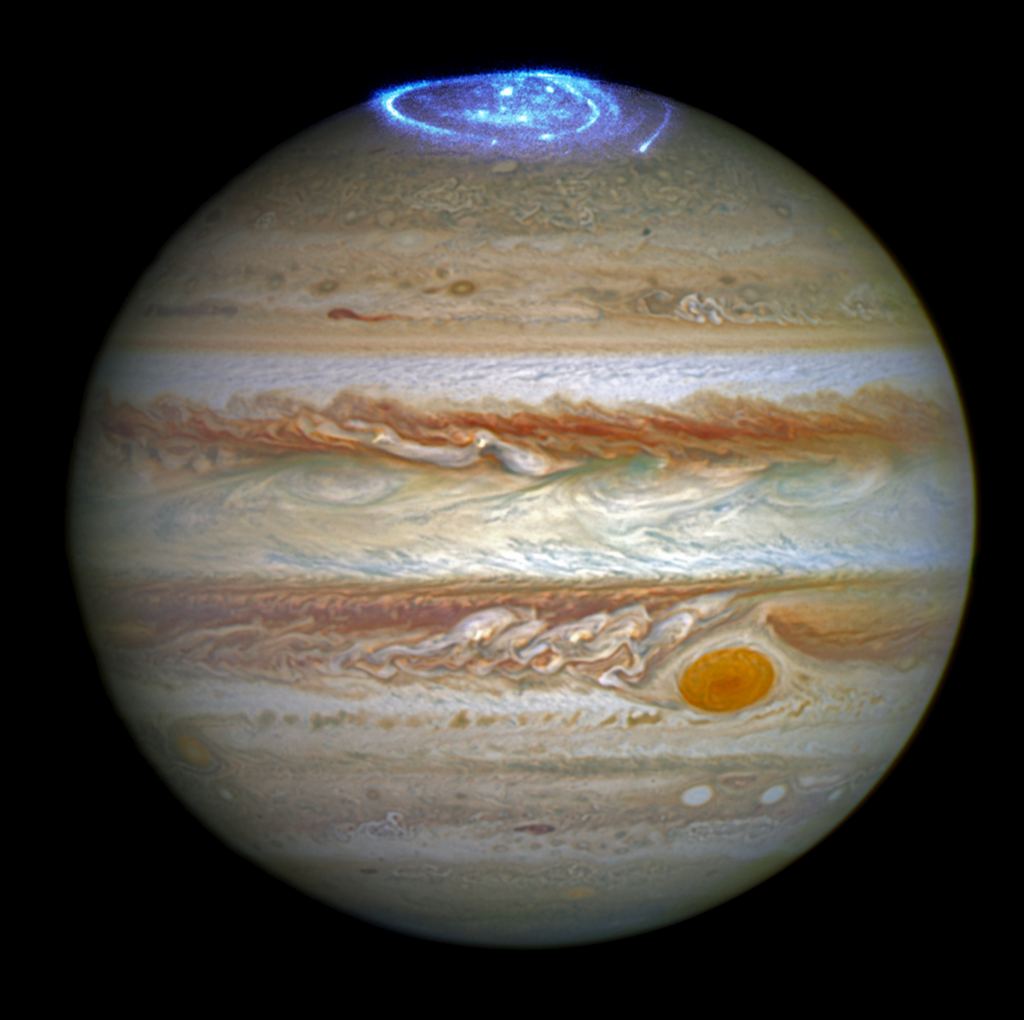Jupiter’s Atmosphere is Surprisingly Hot
By Brian Koberlein
Jupiter is a big planet, but it’s still a planet. That means it doesn’t heat itself through fancy mechanisms like nuclear fusion. Its interior is heated through its own weight, squeezing the interior through hydrostatic equilibrium, and its surface is heated mostly by the Sun. Since Jupiter only gets about 4% of the light per square meter that Earth gets, you’d expect its upper atmosphere to be pretty cold. Traditional models estimate it should be about -70 degrees Celsius. But recent measurements show the upper atmosphere is over 400 degrees Celsius, and in the polar regions as much as 700 degrees Celsius. In the words of Ruby Rhod from the movie The Fifth Element, “It’s Hot Hot Hot!”
With such little sunlight reaching Jupiter, how can its atmosphere be so warm? The team found it has to do with Jupiter’s aurora. On Earth, we have aurora all the time. More popularly known as the northern lights, this glow of the upper atmosphere occurs when ions from the solar wind get caught in Earth’s magnetic field and strike our atmosphere at high speed. Jupiter’s magnetic field is much stronger than Earth’s, and so Jupiter’s aurora can be much more intense. So intense that it can heat Jupiter’s upper atmosphere.

The team showed that it is the polar region of Jupiter where the atmosphere is most heated, and the heat waves correlate with the cycle of Jupiter’s aurora activity. They also studied how this heat is transferred, so that much of Jupiter’s upper atmosphere is hyper-warm. Interestingly, this kind of strong electromagnetic heating is similar to what happens to the Sun’s upper atmosphere.
The Sun is obviously much larger and hotter than Jupiter, with a surface temperature of nearly 5,500 degrees Celsius, but you would still expect the uppermost region of its atmosphere to be cooler than its surface. After all, it’s very cold in space. But observations of the Sun show that its most diffuse upper layer, known as the corona, has a temperature of millions of degrees. This was a long-standing mystery until we finally figured out that solar flares and realignments of the Sun’s magnetic field were heating the corona. It turns out electromagnetism can hold a lot of energy.
Since Jupiter has such a warm upper atmosphere, this could help explain long-lasting weather patterns in its cloud region. After all, storms are powered by a varied temperatures in different regions, such as how the warm tropical ocean on Earth powers hurricanes as the northern hemisphere grows cooler in autumn. Similar temperature variations in Jupiter’s atmosphere could drive the great storms we observe.
Reference: O’Donoghue, James, et al. “A planetary-scale heat wave in Jupiter’s mid-latitude upper atmosphere.” Europlanet Science Congress EPSC2022 (2022): 373.
The post Jupiter’s Atmosphere is Surprisingly Hot appeared first on Universe Today.

September 29, 2022 at 12:30AM
via Universe Today read more...

Post a Comment